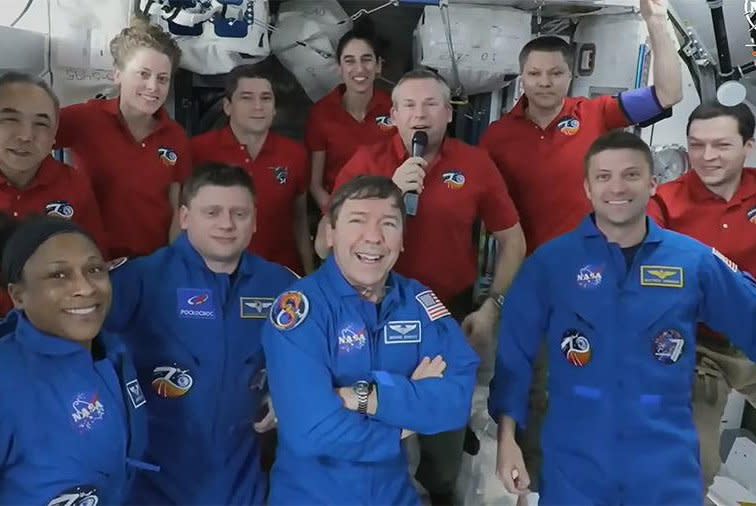NASA's SpaceX Crew-8 mission docks with International Space Station

March 5 (UPI) -- A SpaceX Dragon capsule successfully docked with the International Space Station early Tuesday, more than 24 hours after it launched from the Florida coast with three American astronauts and one Russian cosmonaut onboard.
The spacecraft docked with ISS's forward-facing Harmony module at 2:28 a.m. EST. The opening of the vehicle's hatch followed at about 3:50 a.m., which permitted time for several procedures, including the pressurization of the vestibule and checking for leaks, to be completed.
NASA astronaut Matthew Dominick was the first member of Crew-8 to exit the spacecraft and enter the space station, where he was welcomed with a flying hug from two members of the Expedition 70 crew.
NASA astronauts Michael Barratt and Jeanette Epps soon followed, with Alexander Grebenkin of Russia's Roscosmos space agency being the final member of Crew-8 to enter the ISS.
"Welcome to space, Matt, Jeanette and Alex. And welcome back to space to Mike," Andreas Mogensen of the European Space Agency said during a brief welcoming ceremony.

With the arrival of Crew-8, the three astronauts and one cosmonaut will be taking over for Crew-7, which has been on ISS since August.
Mogensen said the arrival of Crew-8 marked a "slightly bittersweet moment" for his Crew-7 because it starts the countdown toward the end of their six-month mission and return to Earth in a week's time.

"But it's great to see Crew-8. Welcome. You guys are going to have a fantastic mission. I'm sure of it, and we look forward to spending the next week with you," he said.
Dominick was the first to speak on behalf of Crew-8, stating they were "excited to be on board and ready to take over the watch."
Of the four arrivals, Barratt is the only one to have visited the space station and space before. He said the station has "a sense of familiarity and homeness."
"I can't wait to get back to work," he said.
With their arrival, the population of ISS ballooned to 11 -- at least momentarily.
Over the next few days, the station will undergo what NASA calls handover activities that will see duties handed over to Crew-8.
In about a week, Crew-7's four members will enter the capsule Crew-8 had just arrived in and jettison back to Earth.
It will be the official end of Crew-7's mission, but the start of Crew-8's six-month stay on the orbiting laboratory on which they are expected to conduct more than 200 scientific experiments, including medical experiments and technology demonstrations.
Some of their experiments include the use of stem cells in the study of degenerative diseases, NASA said.
#Crew8 docking confirmed! Hatch opening is expected at 4:13am ET (0913 UTC). Watch as three first time fliers and one veteran astronaut arrive at the @Space_Station. pic.twitter.com/oVa9719ri8— NASA (@NASA) March 5, 2024
The Dragon capsule reached the space station after having launched as the payload of a Falcon 9 rocket from Launch Complex 39A at NASA's Kennedy Space Center at 10:53 p.m. EST on Sunday.


